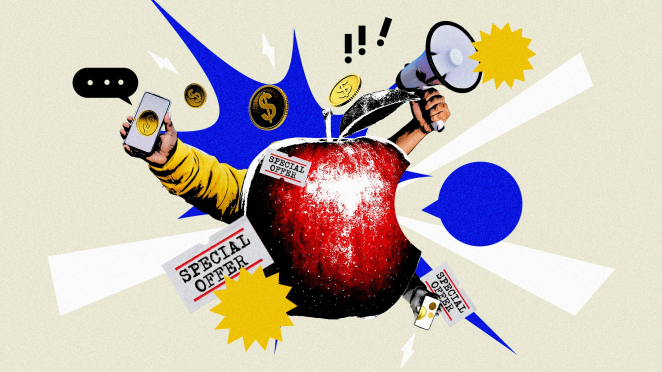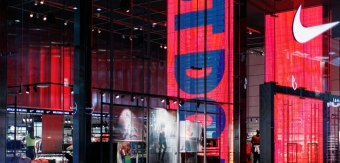Stephen Izatt, MD at brand consultancy Thinkfarm, looks at why the pitching process is a broken, expensive drain on the creative sector – and makes the call for change.
Branding agencies and consultancies like ours constantly face a barrage of challenges in finding new business. One such challenge that has been increasingly prevalent in recent years is expecting agencies to pitch creative concepts for no fee and against an unknown number of firms.
Another is the obstacle of procurement portals and processes that get in the way of building a full understanding of the brief. Finally, there’s a rough calculation that we do before every pitch to get some idea of our probability of success compared to the returns by way of fees. The results can be shocking, as you will see.
No win no fee, no pitch fee for winners
Free pitches, particularly requested by government organisations with cumbersome procurement processes, are taking a toll on the creative sector. Any pitch takes time, money and intellectual and emotional capital.

Smaller agencies rarely have a pitch team dedicated to the task that’s factored into the firm’s overall business model. Therefore, it can mean redirecting folk from fee-earning work to a pitch. If you don’t do it, the peaks and troughs that are so familiar to agencies begin to build.
Giveaways and throwaways
As a through-the-line, brand strategy-led consultancy, we need to fully understand the client’s business, marketing strategy and the target audience. Without that understanding we are conducting an aesthetic exercise which can only be judged subjectively. It doesn’t serve the client well in growing their brand and business.
In a creative pitch, we neither have the time nor money for sufficient research to ensure the integrity of the brand strategy is built into the pitched concept. We have even been told that the client understands a pitched concept will probably be thrown away – wasting even more time and money – but it ‘helps them see how we work’.
We have a massive portfolio of work detailed in case studies that show our methods and the quality of the result. But all the time others are willing to free pitch we are out on a limb.
Filling in boxes, not building relationships
One of the major hurdles for branding agencies and consultants is the lack of direct interaction with the individuals seeking their services. Instead, agencies are often compelled to navigate the maze of procurement portals. While these apparently play a crucial role in ensuring transparency and fairness, they inadvertently hamper the agency-client relationship.

The bureaucratic nature of the procurement process can lead to a disconnect, as agencies are left with little or no opportunity to interrogate the client's needs. The form-based procurement process often seems more suitable for suppliers of chairs and pencils than it does the strategic and creative services of a firm like ours.
Improbable probabilities
We do a rough calculation to determine an approximate probability of success to help us decide if we should pitch. It starts with the number of firms involved. So four firms = 25%. We then factor it according to how strong our credentials are and how well we can meet the brief to increase or decrease that initial percentage.
Because the portal approach, especially used in the public sector, is open to all, there can be a very high number of respondents. And the shocker on a recent tender was finding out, after we had submitted our proposal via a portal, that ours was one of 1,300. Had we known this before, we would not have invested in the process.
Now here’s the worse part. For that local government project the budget was helpfully given up front. It was £100K. If we then take a conservative view and say to complete the process, build an approach, cost it, complete the spreadsheets of personnel and rates, prepare the case studies, line up references, etc, it costs each agency pitching £1,000 (it was more in our case), that local government client, who insisted on agencies providing fair policies, inclusivity, transparency and, ironically, anti-slavery commitments, just took at least £1.3 million out of the creative sector, putting just £100k back in by way of fee payments.
Learning experiences
Not being shortlisted or awarded the project is disappointing. However, in many commercial pitches with a sensible number of participants, clients give valuable feedback and rationale for the loss. Reviewing unsuccessful pitches, learning and continuous improvement is good for us all.

But in procurement-led pitches, we get very little if any feedback, which is unsurprising given the typical volume of respondents. If we do get the rationale for losing, it is the scoring of our proposal against their criteria. However, that too is disappointing when typical scoring matrices allocate 45% of the assessment to pricing and a miniscule 10% for experience.
A call for change
To ensure a healthy and thriving creative sector, clients, particularly public-sector organisations, need to reevaluate procurement practices. Instead of throwing out the brief to everybody via a procurement portal, do some research into which agencies could serve you best and then brief your procurement department to approach us.
Make yourselves more accessible for conversations. With fewer agencies pitching you will have more time to talk to us. And please, stop asking for free pitches of creative concepts. They do neither side any good. They are wasteful, don’t get the best from us and are very hit and miss.
The UK creative services sector is internationally renowned but if these procurement practices don’t change, we will lose our place in the world order and many jobs along the way. We need to create a business environment that nurtures creativity, growth and collaboration, ensuring a healthier and more sustainable branding industry for all.






